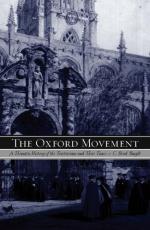But on the principles laid down in this volume, the Roman controversy, in its varying forms, was carried on—for the time by Mr. Newman, permanently by the other leaders of the movement. In its main outlines, the view has become the accepted Anglican view. Many other most important matters have come into the debate. The publicly altered attitude of the Papacy has indefinitely widened the breach between England and Rome. But the fundamental idea of the relations and character of the two Churches remains the same as it was shadowed forth in 1836.
One very important volume on these questions ought not to be passed by without notice. This was the Treatise on the Church of Christ, 1838, by Mr. W. Palmer, who had already by his Origines of the English Ritual, 1832, done much to keep up that interest of Churchmen in the early devotional language of the Church, which had first been called forth by Bishop Lloyd’s lectures on the Prayer Book. The Treatise on the Church was an honour to English theology and learning; in point of plan and structure we have few books like it.[72] It is comprehensive, methodical, well-compacted, and, from its own point of view, exhaustive. It is written with full knowledge of the state of the question at the time, both on the Anglican side and on the Roman. Its author evades no objection, and is aware of most. It is rigorous in form, and has no place for anything but substantial argument. It is a book which, as the Apologia tells us, commanded the respect of such an accomplished controversialist as Perrone; and, it may be added, of a theologian of an opposite school, Dr. Doellinger. It is also one on which the highest value has been set by Mr. Gladstone. It is remarkable that it did not exercise more influence




